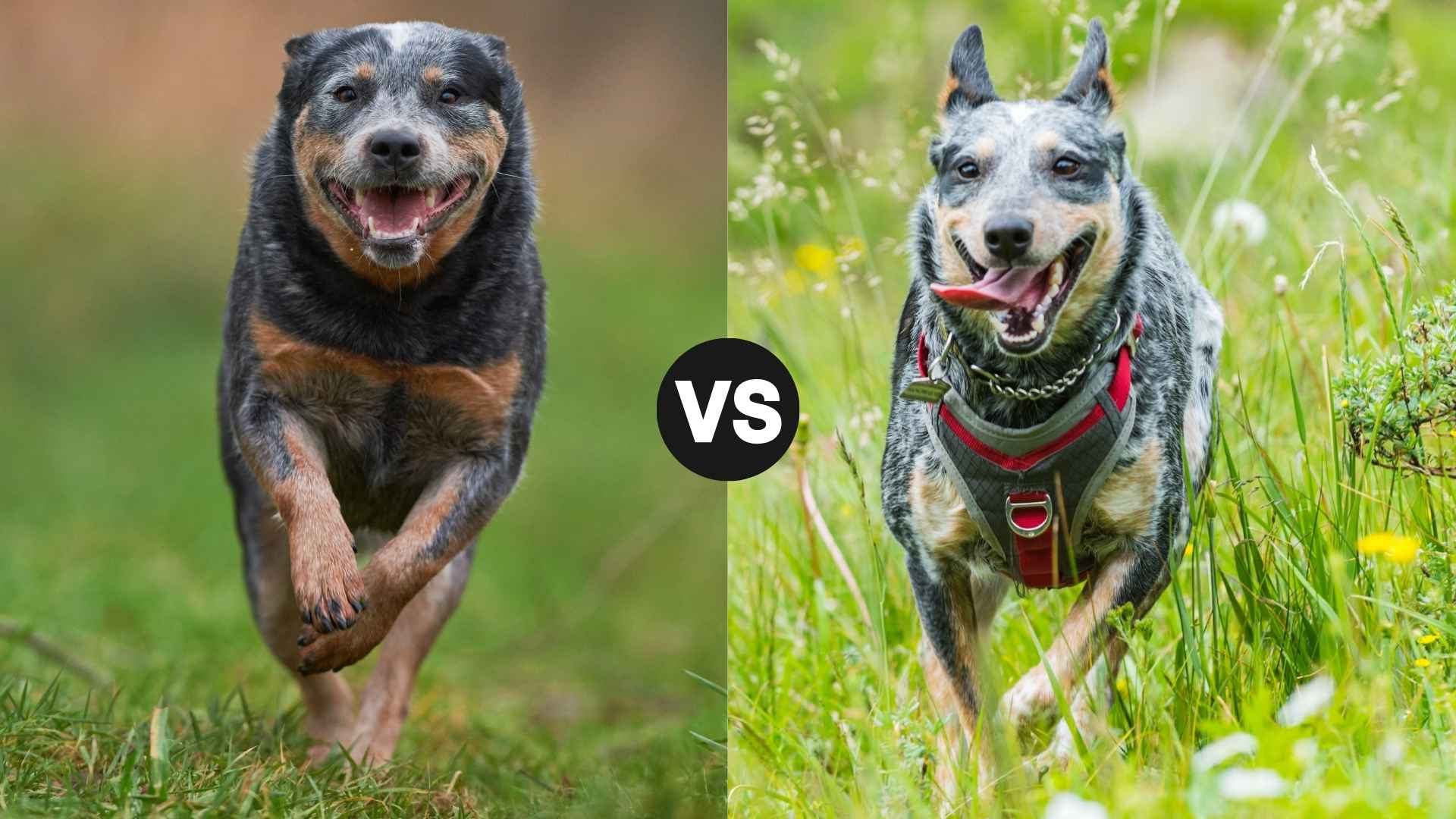Australian Cattle Dog is a popular dog breed. The intelligent, loyal, and muscular Australian Cattle Dog is an amazing partner and a hard worker. According to PDSA, it is a herding dog. But what about the Blue Heeler?
Does a Blue Heeler match in characteristics to an Australian Cattle Dog? They definitely do because they are the same breed. It is not unusual for a dog breed to have more than one name, and the Australian Cattle Dog is one such breed.
Blue and Red Heelers are types of Australian Cattle Dogs. What are the real differences between Australian Cattle Dogs and Blue Heelers? Are Blue Heelers actually blue in color? Read this article to find answers to all such questions.
Have a look at these differences between the Australian Cattle Dog vs Blue Heeler.
Australian Cattle Dog vs. Blue Heeler
There are only a few differences between the two breeds. The Blue Heeler is a color variation of the Australian Cattle Dog, while the Australian Cattle Dog breed comes in a few other colors. Otherwise, the two herding dogs are identical to each other.
Appearance Comparison: Australian Cattle Dog vs. Blue Heeler
Blue Heeler and Australian Cattle Dog are both compact and muscular dogs, known for their strength and agility. The male dogs can stand 18 to 20 inches tall at the shoulder, whereas females measure around 17 to 19 inches. They weigh between 35 and 50 pounds according to the American Kennel Club.

Color Variations: Australian Cattle Dog, Blue Heeler, and Red Heeler
As mentioned earlier, Blue Heelers and Australian Cattle Dogs are the same breed. The only feature that tells them apart is their coat color. The Blue Heeler has a blue coat. Have you ever wondered how they get their blue coat?
Australian Cattle Dogs are born all white. Only their ears, eyes, and sometimes the tail and the back can be dark. On the other hand, Blue Heelers have some black spots. When the puppy turns 4 months old, the black spots start merging with the white fur and turn blue-gray, giving them their characteristic blue color.
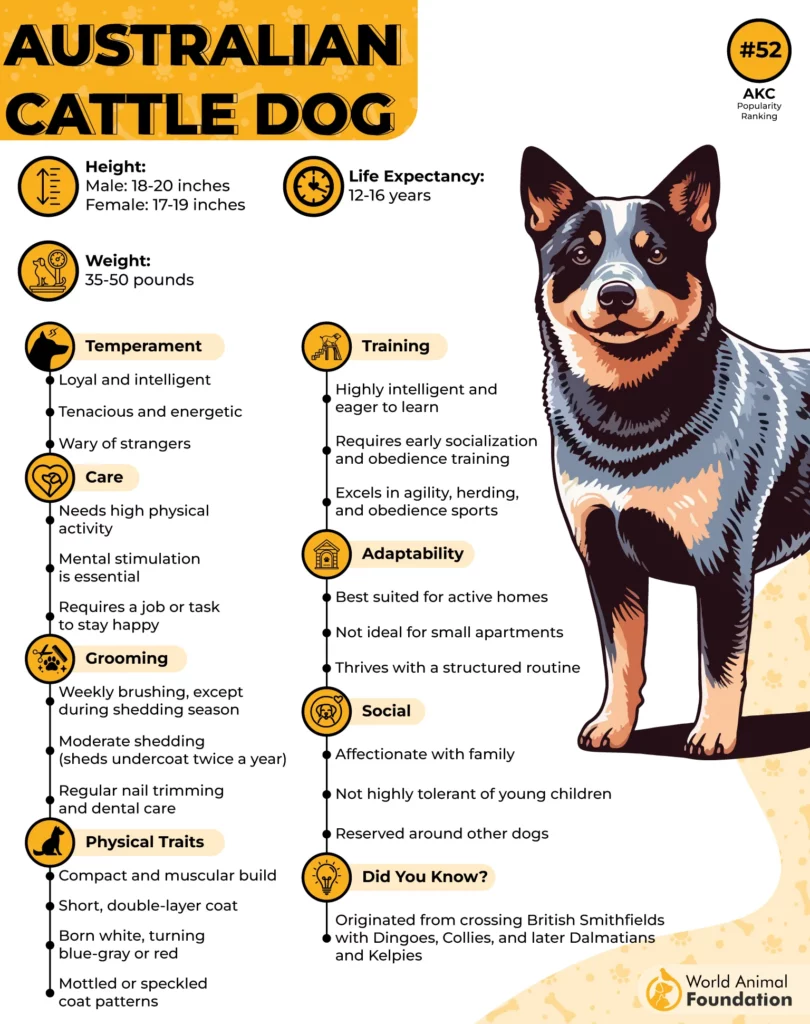
The number of black spots determines the nuance of blue as the Blue Heeler grows older. Depending on how and where the blue color spreads, Blue Heeler has two variations: blue mottled and blue speckled.
Blue Speckled: This variant has predominantly black color in its coat, whereas the white is spread in small, uneven groups, looking like white spots.
Blue Mottled: This variant has more white on its coat. So the coat appears white with small black spots.
It is important to mention here that Australian Cattle Dogs have a Red Heeler variation. Red Heeler puppies have brown hair growing on their coat instead of black. Sometimes a dog can be a combination of two.
It means that some Blue Heelers can have tan markings on their face, while some Red Heelers can have black spots on their coat.
Unique Characteristics of Australian Cattle Dog, Blue Heeler, and Red Heeler
Both Blue Heeler and Red Heeler may have tan markings around their lips and the lower neck, under their chest, and on their legs. A distinguishing feature is a star-shaped white spot on their forehead, called the “Bentley mark.”

The coat can also have patches of solid color over the body. Blue Heelers and Red Heelers also seem to have a mask around both eyes or one eye. However, the Blue Heeler’s mask is black while the Red Heeler’s mask is brown or red. Rarely, puppies can be born without a mask.
Australian Cattle Dogs have a double-layered coat. The short and dense undercoat is covered by a short and straight upper coat, which protects their skin from harmful elements.
Temperament Traits: Comparing Australian Cattle Dog and Blue Heeler
Australian Cattle Dogs are highly sought for their loyalty and strong work ethic. These dogs excel at herding cattle and make great family pets with proper training and socialization. Positive reinforcement methods work great for ACDs.
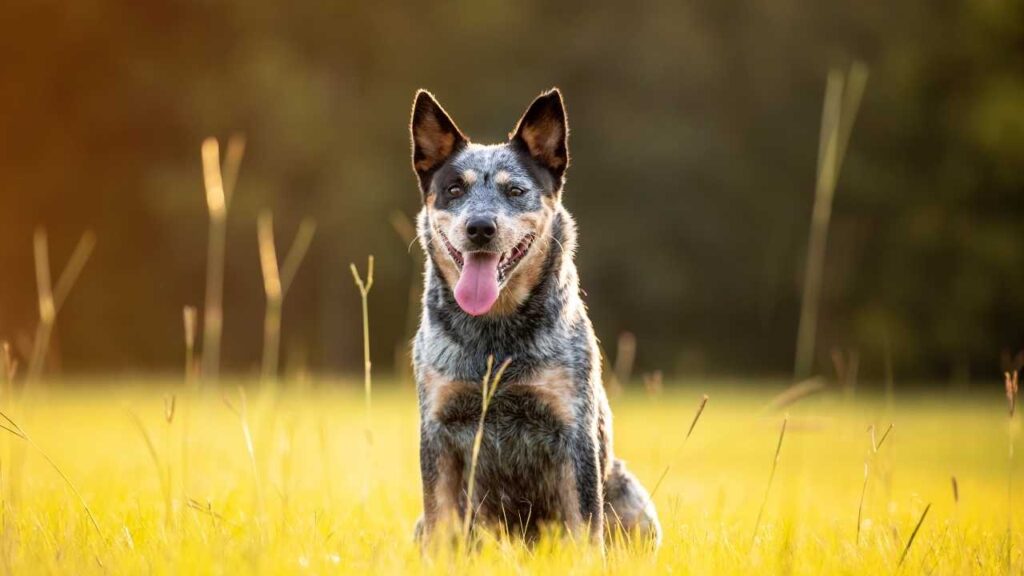
Blue Heeler ranks 10th on the list of the most intelligent dog breeds based on how obedient they are when trained.
Inherent Working and Herding Instincts
Australian Cattle Dogs are herding dogs with strong instincts to herd and drive livestock. These alert pooches are always ready to work. Their extreme intelligence shows their love for learning new commands and tasks.
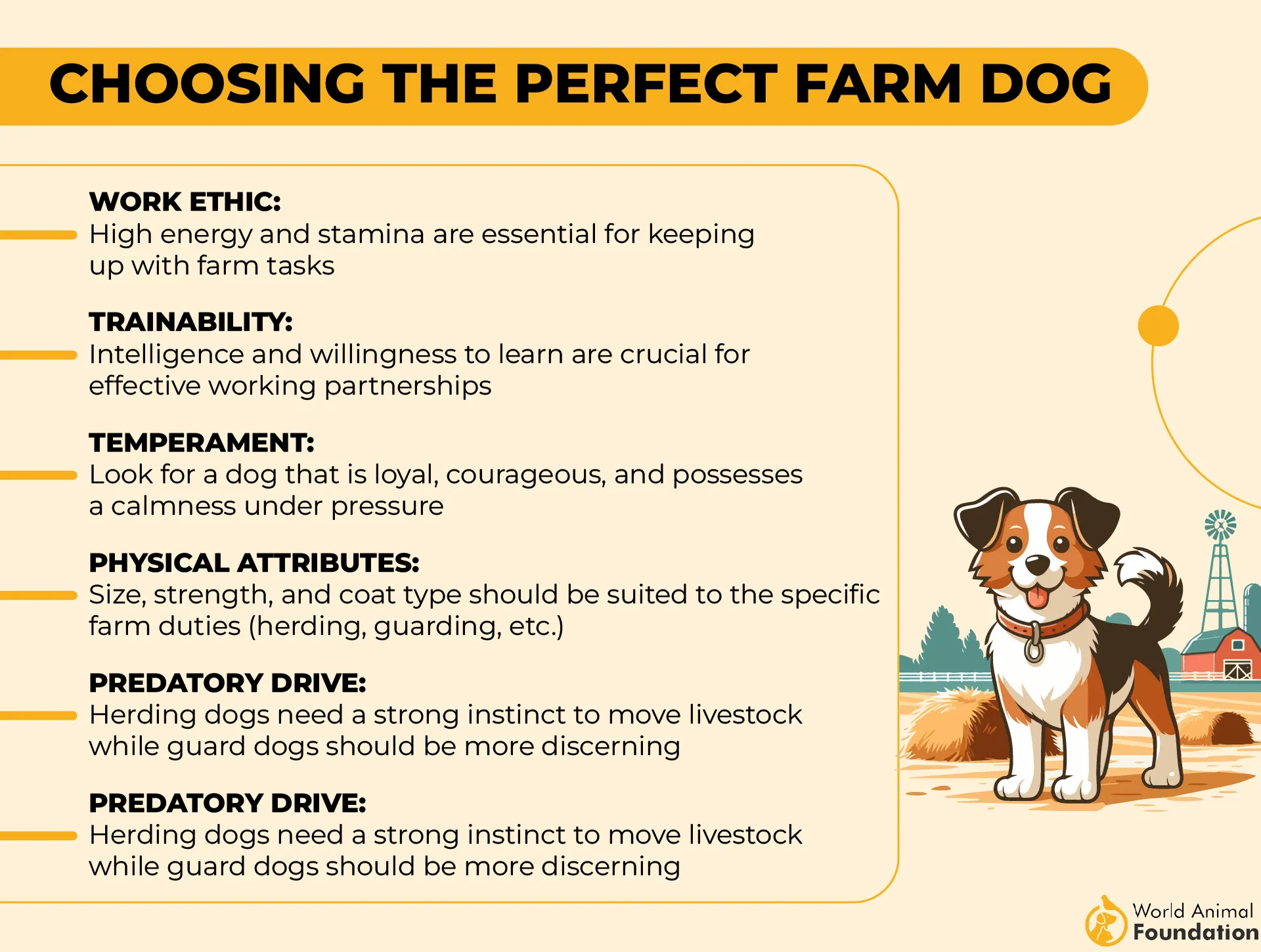
They have extremely high energy levels and need proper outlets to channel their energy. Otherwise, they will exhibit destructive behavior.
They need at least 2 hours of exercise every day for adequate physical and mental stimulation. According to PetMD, the exercise can involve extended periods of running, jogging, frisbee, fetch, and agility training.
Interactions with Family and Other Dogs
Australian Cattle Dogs, including their Blue Heeler variation, are protective of their families. They are loving and affectionate towards their pet parents, but might be a bit reserved with strangers. Early socialization is important to turn your ACD into a well-behaved pup.

ACDs for strong bonds with their owners. You cannot leave them alone for extended periods, as they are vulnerable to developing separation anxiety.
They get along well with kids and other dogs raised with them. ACDs are affectionate and playful around older children. However, you have to supervise them around children because their herding instincts might cause them to nip at their heels.
Australian Cattle Dogs are the natural watchdogs, so they bark to alert you about potential dangers. With proper training, you can teach your dog to differentiate between friend and foe and welcome your guests.
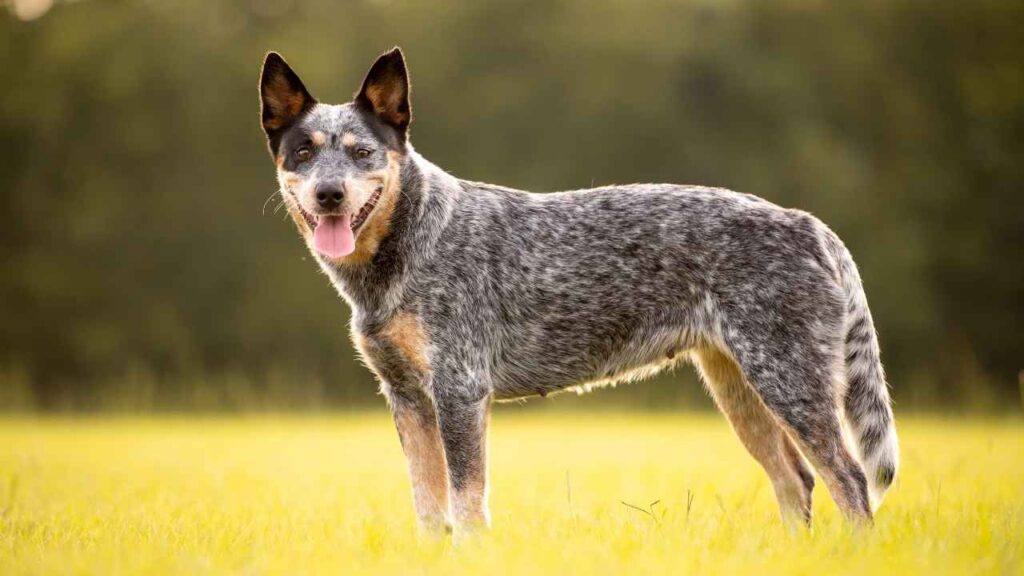
Australian Cattle Dogs might not be ideal for you if you live in an apartment. They need an open space to run and play. Otherwise, they will become destructive.
Are Blue Heelers Naturally Aggressive?
Do you know why Blue Heeler is named so? The “blue” part of the name refers to its coat color, and it is called a “heeler” because of its behavior of nipping at the heels of the cattle it herds. They are capable of exhibiting the same attitude towards humans, as mentioned earlier.
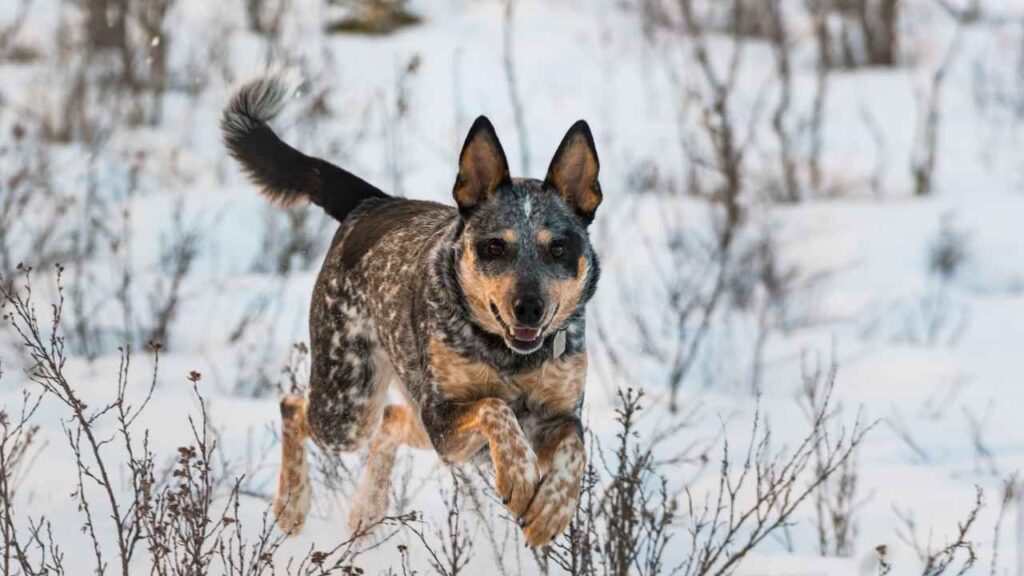
Australian Cattle Dogs also have a reputation for biting people. In many cases, ACDs have been reported to aggressively attack the heels of the guests leaving their homes. This behavior could either be caused by instinct or a desire to cause harm.
Cutting it short, the Australian Cattle Dogs are instinctively aggressive, so you need to train them properly to overcome their aggressive behavior.
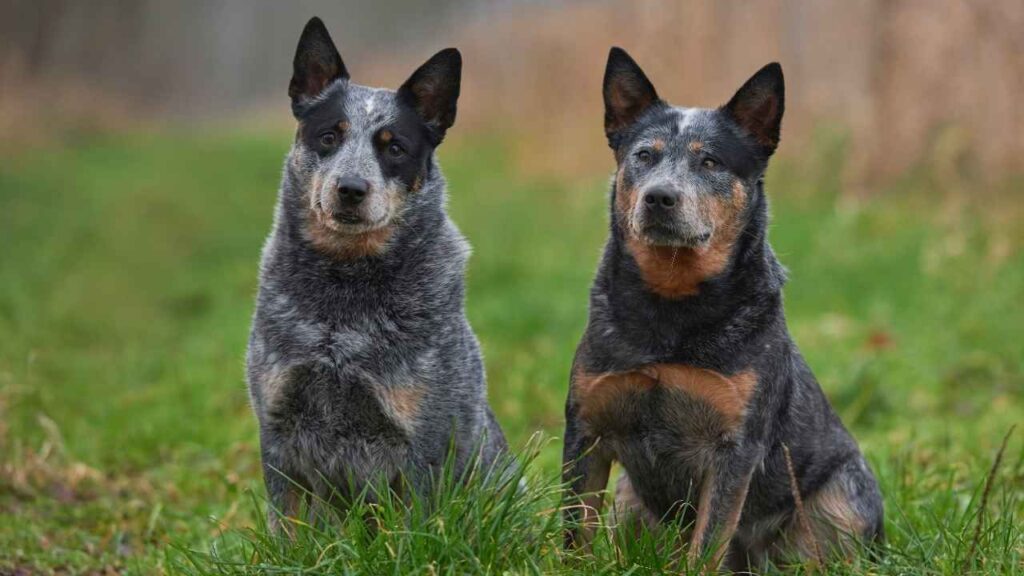
In addition, pet parents need to be kind and affectionate towards their dogs. When a dog is hit or kicked regularly, they are more likely to become aggressive.
Conclusion
Blue Heeler is a variant Australian Cattle Dog, also known as Queensland Heeler. To be very precise, both are different names for the same breed. However, the key difference lies in their coat color. Blue heelers are blue in color, whereas ACDs can have some other colors. Red Heeler is another popular variant of ACDs.
If you have enough time and space to fulfill their exercise needs, Australian Cattle Dogs and Blue Heelers might be well suited for your home. Adopt a Blue Heeler now! Take them for long walks or have a playtime in the yard to have fun.


